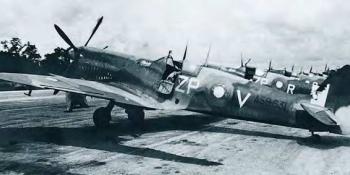ARNHEM DAKOTAS
Within days of formation in 1944, a Canadian transport squadron made its debut supporting Operation Market Garden. However, it was to prove a hazardous and costly birth.
The contribution of the Royal Canadian Air Force during World War Two was massive. Overall, the force expanded from eight regular squadrons and 4,000 men in September 1939 to the world’s fourth largest air force by 1945, with 80 squadrons and 215,000 personnel at its peak.
Maritime patrol and other functions were important, of course, but the vital Commonwealth Air Training Plan meant Canada trained a third of the RAF’s wartime aircrew, while Canadian squadrons represented about a quarter of the strength under RAF command. The RCAF was no stranger to operations in Europe, forming numerous bomber, fighter and coastal squadrons. However, there was just one British-based Canadian squadron flying in the transport role.
“ The RCAF was no stranger to operations in Europe… however, there was just one British-based Canadian squadron flying in the transport role”
On September 4, 1944, Wing Commander John ‘Jack’ Sproule arrived at Blakehill Farm, Wiltshire, and began to form 437 ‘Husky’ Squadron, RCAF, under No.46 Group, Transp…




